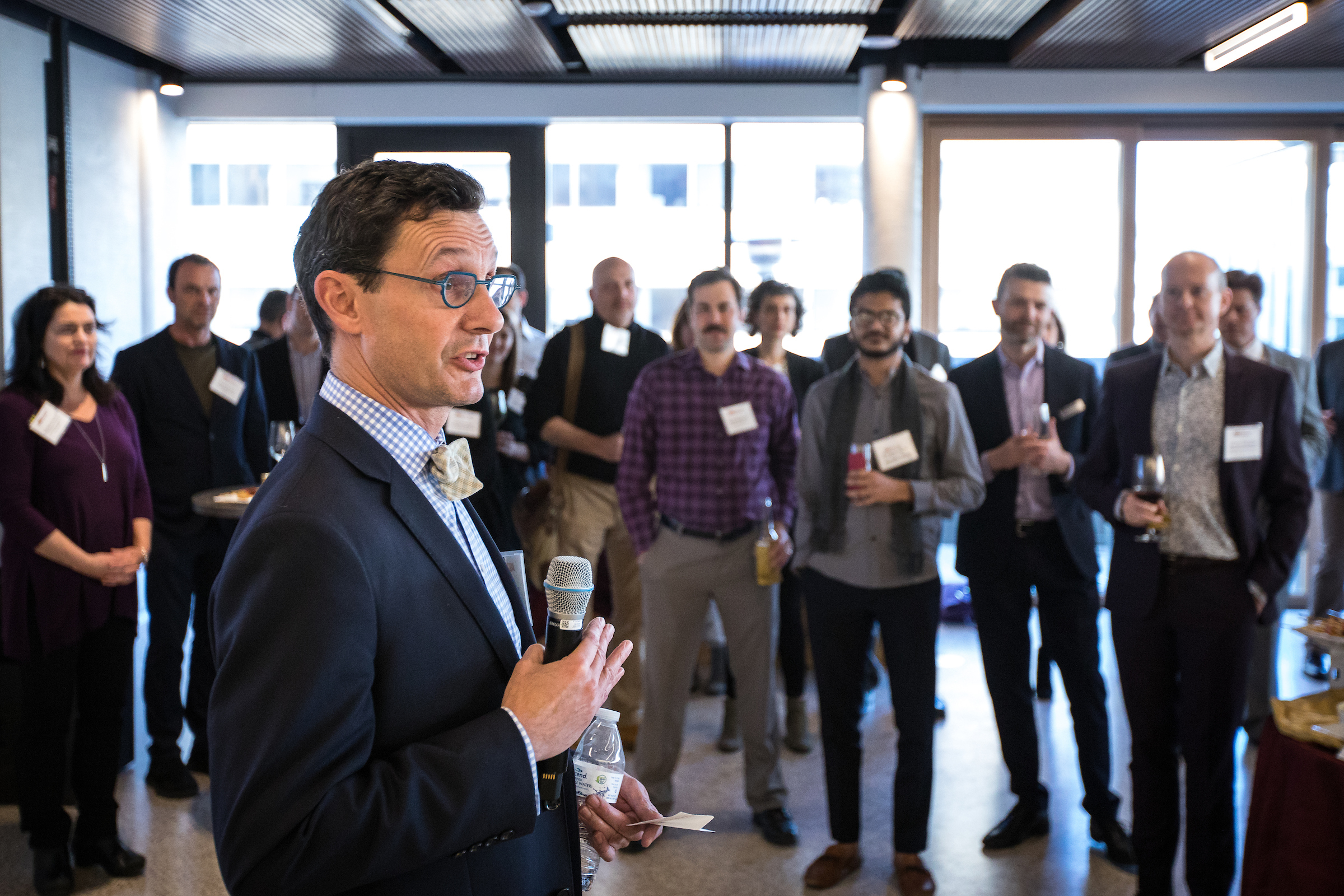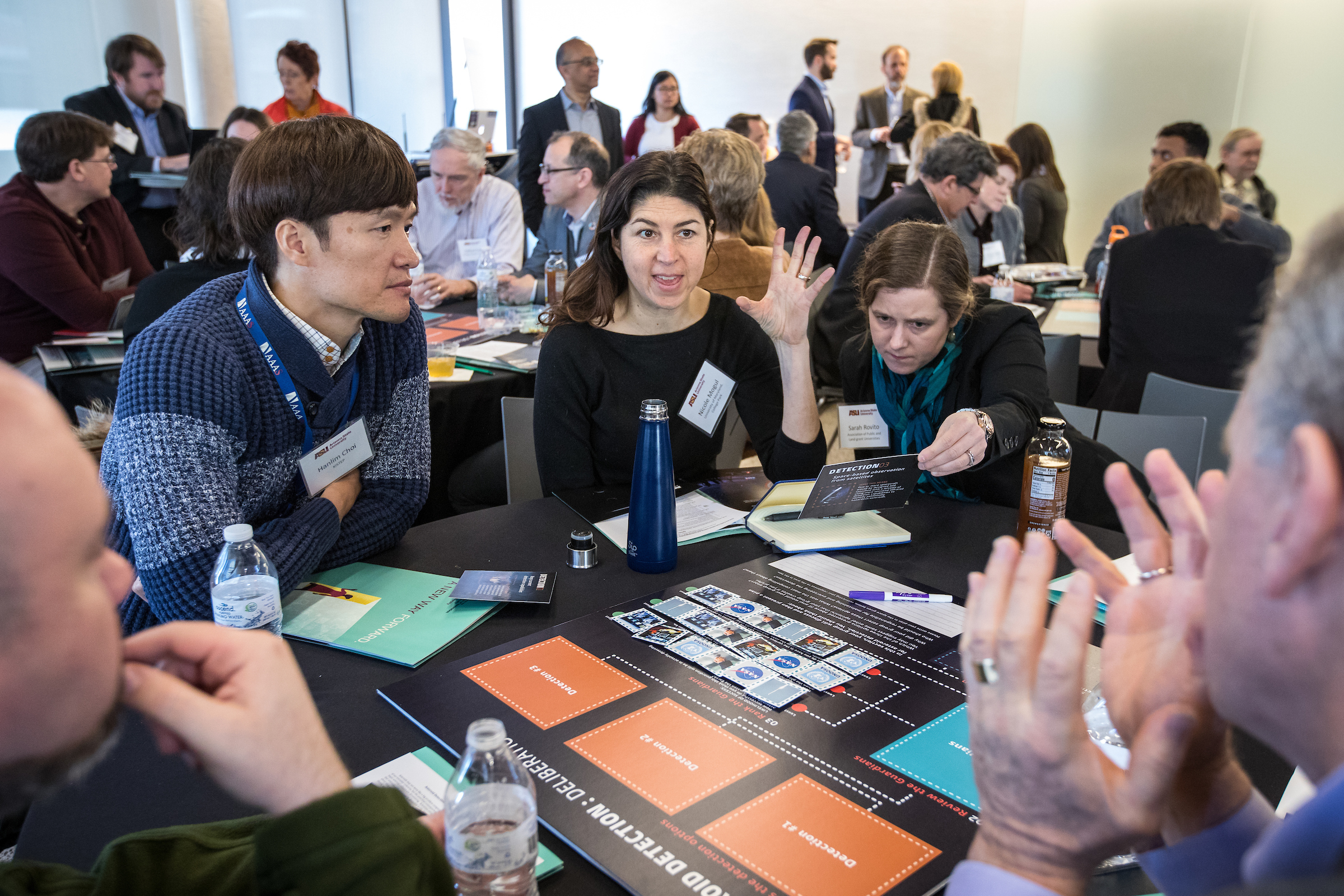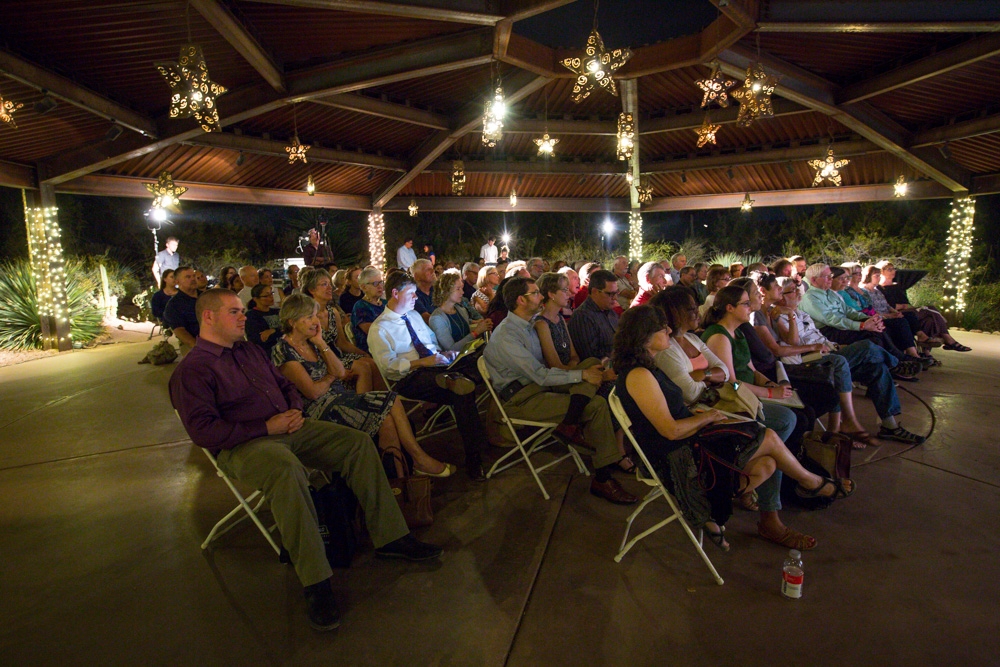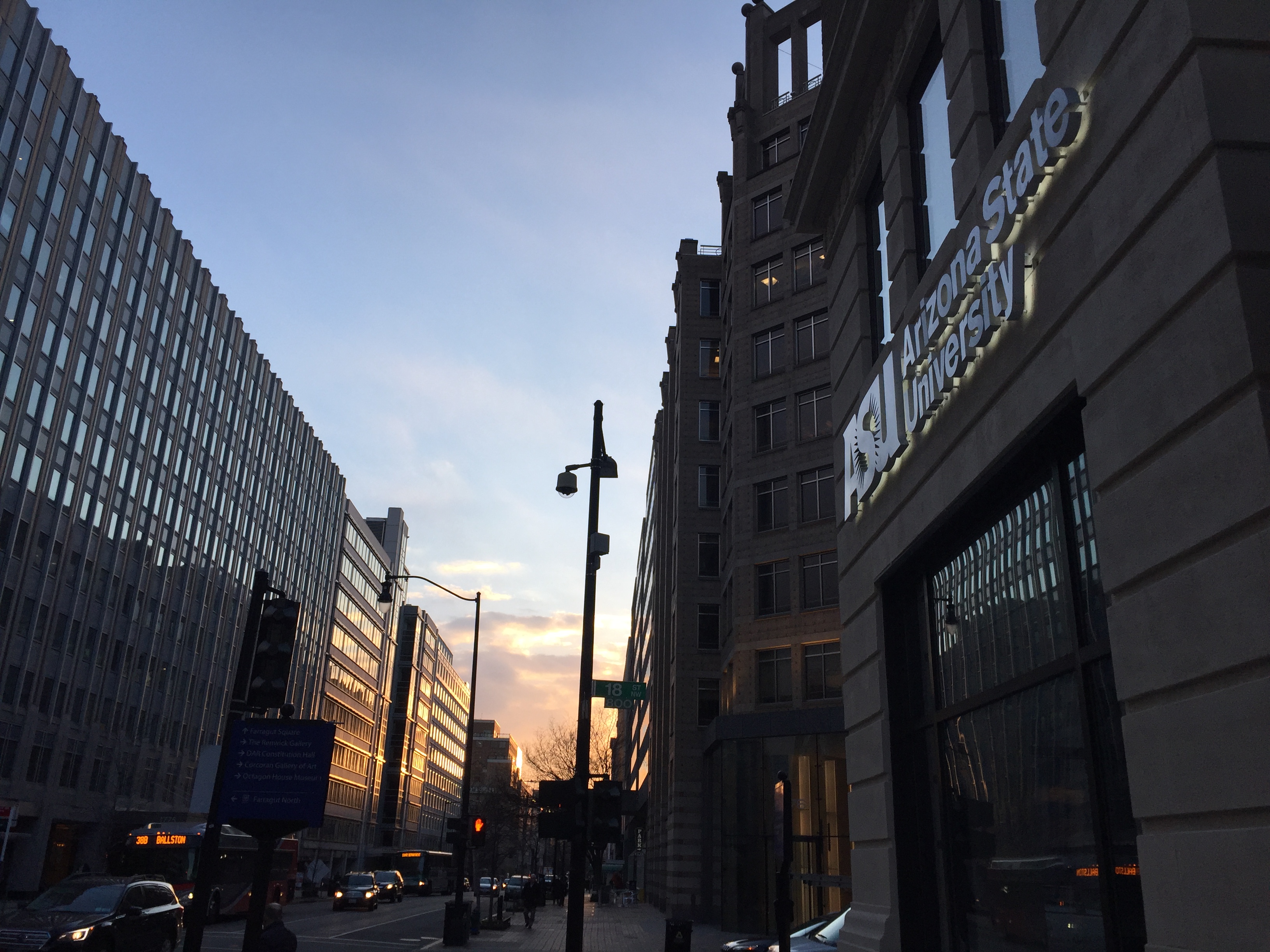Day 5: Educating athletes and the public, DC partnerships, redesigning design
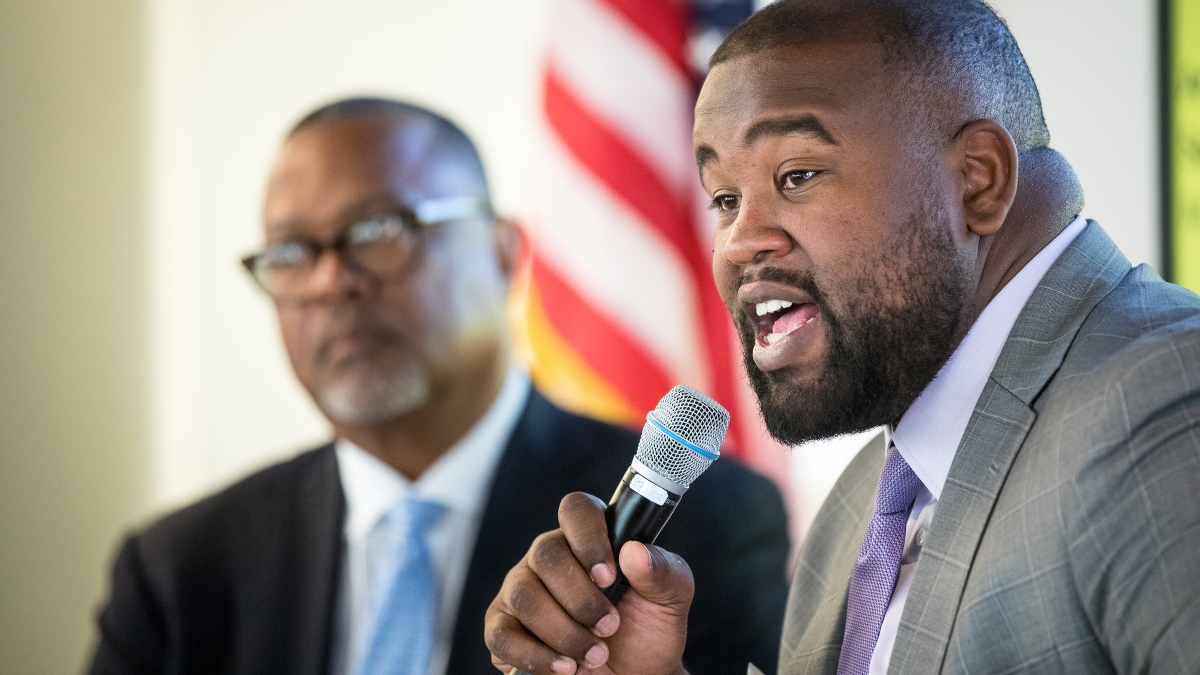
Editor's note: Friday's events at the Barrett & O'Connor Washington Center focused on helping professional athletes transition out of their playing careers, new ways of involving citizens on decisions about science and policy, and a roundtable on redesigning design education. Find the blog roundup here, with links to the other day's highlights.
A parting thought
6:36 p.m. Friday, March 16
As we head into the weekend, we leave you with this:
“ASU … is the most banana-pants amazing place,” said The Design School director Jason Schupbach, who recently moved to the desert from Washington, D.C. “There’s something magical happening there.”
But wait, there’s more
6:30 p.m. Friday, March 16
The week is over, but the grand opening isn’t — events continue next week at the new Barrett & O’Connor Washington Center in our nation’s capital.
“The McCain Institute at ASU: How Do We End Terrorism?” 5-7 p.m. Monday, March 19 — Former Homeland Security Advisor (and McCain Institute Trustee) Fran Townsend, former Director of the US National Counter-Terrorism Center Nick Rasmussen, and special guests describe the evolution of global terrorism since 9/11and discuss long-term approaches for overcoming it.
CGEST Reception, 5:30-7 p.m. Tuesday, March 20 — This event hosted by the Center for Gender Equity in Science and Technology convenes leading African-American women in STEM to provide a forum for women to strategize and build coalitions, continue discourse from previous gatherings that have led to grant-funded projects, share job announcements and explore opportunities to support and lead interagency functions.
Learn more at washingtondc.asu.edu/center-launch.
The dean on redesigning design
6:25 p.m. Friday, March 16
Dean Steven J. Tepper greets guests at the “Arts and Design at ASU” reception sponsored by the Herberger Institute for Design and the Arts on Friday in Washington, D.C. Photo by Charlie Leight/ASU Now
“We believe that design and design schools need to be redesigned, like any other institution,” said Steven J. Tepper, dean of the Herberger Institute for Design and the Arts at ASU, during a Friday evening reception at the new center. “They need to be changed — and we’re trying to move forward in a very smart and purposeful way.”
Video: The future of design education
5:36 p.m. Friday, March 16
Nearly two dozen Washington-area design professionals joined Jason Schupbach, director of The Design School in the Herberger Institute for Design and the Arts, to share their ideas about the future of design on Friday afternoon. Drawn from government, business, industry associations and education, this roundtable discussion to gather insights and make plans for a school redesign is one of four Schupbach and his team have organized in cities around the country, including San Francisco, New York and Los Angeles, in addition to Washington, D.C.
“How can design education be more relevant?” read the main screen. “Where is design going?” read a white board soon jammed with sticky-note responses. Over the next year, the school will take what is learned in the roundtables, expand input from a wider public online, engage in an internal dialogue and make plans to transform The Design School’s curriculum and how best to shape the designers of the future.
Here, Schupbach talks about some of the questions the school is facing.
Video by Jamie Ell/ASU Now
Panel: 'How the Public Can Inform Science and Technology Policy: The Case of Planetary Defense'
5:15 p.m. Friday, March 16
Participants deliberate best practices for the asteroid-detection activity during the Friday afternoon event, "How the Public Can Inform Science and Technology Policy: The Case of Planetary Defense." Photo by Charlie Leight/ASU Now
In the world of science and emerging technology, it can seem sometimes that the latest research stays within the realm of policymakers and scientists.
But there are growing numbers of people in those communities who think the knowledge — and the ideas for how we move forward — should belong to everyone.
A four-hour event Friday at the Barrett & O’Connor Washington Center — hosted by ASU’s School for the Future of Innovation in Society, School of Earth and Space Exploration, and the Consortium for Science, Policy and Outcomes, in partnership with the Museum of Science, Boston — brought in a variety of members of the Washington science policy community, media and academic organizations.
“Your role today is as a citizen, not as a member of the inside-the-Beltway ‘privileged class,’” CSPO co-director Daniel Sarewitz told the crowd before they were divided into teams and charged with the day’s discussion mission.
In 2014, CSPO led a pilot study using Participatory Technology Assessment (pTA) to elicit informed and diverse citizen views and help inform decisions at NASA about its Asteroid Initiative.
On Friday, participants at the ASU center went through the same process, focusing on planetary defense (that is, defending the planet against asteroid collisions — though one NASA representative in attendance did tell this writer in an aside that “nothing is headed our way today” — or anytime soon).
After spending about an hour deliberating at their tables with the interactive decision boards, the teams presented their choices to the room. Most chose option 3 (the U.S. leading an international partnership) though a few went with option 2 (creating a new U.S. office of planetary defense).
Just as had been the response in CSPO’s pilot citizen-input study, participants were enthusiastic after the process and full of questions and comments, including some questioning whether we should be spending money on planetary defense at all — especially “when climate change is an issue as well,” one person said.
The goal of such citizen forums is to both engage the public in issues of science, technology and policy, and to seek the creativity of people outside the usual voices heard in science debate.
“It takes folks to step back and look more at the whole,” Lindley Johnson, planetary defense officer at NASA, said about public input. “The American citizen has the ability to take a more holistic view of what the program should be. It is the American taxpayers’ space program.”
Panel: ‘For the Win: Innovative Approaches to Athlete Education’
2:30 p.m. Friday, March 16
Led by Kenneth Shropshire, CEO of the Global Sport Institute and Adidas Distinguished Professor of global sport, a panel of experts discussed how education can help athletes transition out of their playing careers and onto paths to long-term success.
On financial incentives in college sports:
Amy Perko, chief executive officer, Knight Commission on Intercollegiate Athletics: “March Madness generates over $800 million every year, and the majority of that money is sent back to Division 1 schools. Forty percent of the money sent back is based on how teams perform in the tournament. Our commission said, that is too much money being placed on tournament success and incentive-driven behavior. In 2016, they changed the revenue distribution for the tournament money. For the first time, incentives will be aligned to graduation and academic success moving forward.”
Molly Ott, assistant professor, Mary Lou Fulton Teachers College, ASU: “Top football players who go into the NFL are bringing in $1.3 million individually to their colleges and universities. What are the benefits that athletes are receiving, both in terms of the actual degree itself, but also the experience they have and the learning opportunities and skills they develop in college? There are trade-offs. That’s the issue: ensuring that there are equitable opportunities for athletes balancing out their academic and athletic commitments.”
The panelists of the Global Sport Initiative discussed financial incentives, racial disparities and how higher education can better prepare student-athletes for life after their playing careers end. The panel was moderated by GSI CEO Ken Shropshire (left) and included Martin Carlsson-Wall of the Stockholm School of Economics and Arthur McAfee, the senior vice president of player engagement for the NFL (with microphone).
On race:
Collin Williams, director, leadership & education programs, Ross Initiative in Sports for Equality: “When we look at the student body overall, black male student athletes are performing worse than the black male undergraduates who are not athletes, they are performing worse than student athletes overall, as well as worse than undergraduates overall. We have to look at this problem not as just a large-scale problem, we have to hone in and pay attention to the space that needs the most attention. Black graduation rates have gone up by two percent in the last few years, but a lot more work has to be done.”
Ott: (Discussing the outcomes of ASU’s Scholar Baller program) “ASU is one of the schools where our black male athletes are graduating 17 percent points higher than other black males on campus. That looks great; however, our overall black male graduation rate is only 39 percent. So, the athletes are doing a lot better, but I think it also shows that some of these issues are issues related to higher education, not even just college sports. Sport can be ahead in a lot of fronts. And this is one example where I think at ASU there are things going on in our athletics programs that could be transferable to the issues that are happening on the rest of campus.”
On athlete identity:
Martin Carlsson-Wall, associate professor, Stockholm School of Economics: “One issue that we are discussing, and other countries are discussing, is the issue of individual identity. In Sweden … our sports stars are also struggling with this identity shift — that you’re really someone, and then the lights are just completely not there anymore. They are really struggling about their identity. And what we ask them is, do you want to be a one-career individual, or do you want to be a two-career individual?”
Williams: “When we talk about identity, for a lot of these folks, it’s the first time they’ve been asked about who they are not relative to sport. If you can think about your entire experience as an adult, and think about going through life for such an extended period of time where you were limited to a singular identity, it’s really hard to think about. How do you take those skills that you clearly have developed over a period of time and apply those in other ways? How do you talk about working towards one goal for 19 years and translate that into a resume when you don’t have work experience?”
On meaningful athlete education:
Arthur McAfee, senior vice president of player engagement, NFL: “The athletes come to campus, they have to major in these things that the university offers, but there is no national curriculum for athletes. So it’s possible, maybe, to create a national curriculum for athletes, because all the rules they play by are national rules. It’s always, in my mind, a policy decision by the institutions to create a circumstance that would be favorable to the athletes as they think forward beyond just their university’s core curriculum in terms of education.”
Williams: “Ultimately, this conversation is one about time. When we look at the demographic that I’m really focused on, the revenue-generating athletes, it’s not really feasible to say, come to school, spend 37 hours at minimum on your sport and then spend another 40 hours to be an effective, successful student. How are we expecting folks to get meaningful degrees and dedicate the hours necessary to learn the concepts they have to learn if there is no time for them to, at minimum, remain eligible, make it to practices, and then rest enough. We need to think about the ways in which we approach scholarship. Do we want to allow athletes to be more flexible in the ways in which they prioritize sport and education, as long as we keep education as the goal?”
On transitioning out of sports:
Perko: “The NCAA does a study, and they ask Division I, II and III basketball players, ‘how many of you think you’re going to go pro?’ And, as you might expect, more than three quarters of the Division I players think they are going to be professional. Fifty percent of Division II players think they’re going to play professionally. And 25 percent of Division III players think they are going to play professionally. … Statistically, in Division I, only about three percent are going to be drafted by the NBA. But there are lots of leagues around the world. Of the Power 5 conferences, 75 percent of the basketball players will play somewhere professionally. The majority of those are going to be internationally. What are we doing, as educators, to help get them ready for that opportunity?”
***
Following the panel, Shropshire spoke with Jacques McClendon, director of player engagement for the Los Angeles Rams and former NFL and University of Tennessee football player.
“For these guys, they want to know the why,” McClendon said. “Why do I go back to school? I’m making — the minimum is $450,000 — and you’re telling me a college graduate makes $60,000, why do I need to go back to class?”
McClendon said the transition from student-athlete to star-athlete and back to just plain student can be rough for many.
“If we can get these guys back to class, OK, that’s great, but they’re sitting with people who have no clue what they’re going through. … I think it’s hard for them to feel normal in the classroom setting. And that’s some of the push back you get from these guys is, 'These guys haven’t played on a Sunday in front of 90,000 people.'”
It comes down to motivating student-athletes to finding and believing in their second path.
“It all starts with the education piece, because how do you empower somebody to transcend sport, once sport is over, if they haven’t been taught what their ‘why’ is, what they want to do, then how are they going to fly?” he said. “How can we motivate these guys to actually want to learn, to want to strive for better? That’s the conversation that has to be had.”
What happens when you get smart minds together
11:30 a.m. Friday, March 16
A crowd listens to a Zócalo Public Square discussion on the question, "Should health care systems be national?" at the Desert Botanical Garden in Phoenix on April 6, 2016. Among its events, ASU's Zócalo Public Square is partnering with the Smithsonian on national conversations on "What It Means to Be American." Photo by Charlie Leight/ASU Now
Part of ASU’s charter is “advancing research and discovery of public value; and assuming fundamental responsibility for the economic, social, cultural and overall health of the communities it serves.”
To accomplish that, the university seeks out strategic partnerships with a range of organizations. Among those:
• New America: This is a Washington-based interdisciplinary think tank and civic enterprise that strives to understand problems and opportunities facing the United States. ASU and New America projects include Future Tense, an exploration of emerging technologies and their transformative effects, and the Future of War, an examination of the changing nature of war.
• Council on Competitiveness: ASU is an active member of the Council on Competitiveness, which is a nonpartisan, nongovernmental organization in Washington, D.C., that focuses the debate on competitiveness by bringing together business, labor, academic and government leaders to evaluate economic challenges and opportunities. ASU President Michael Crow serves as the group’s university vice chairman.
• U.S. Chamber of Commerce — U.S. Israel Business Initiative: ASU is an active member of the U.S.-Israel Business Initiative, which is part of the U.S. Chamber. It is the only Washington-based national program focused on advancing the business partnership between the United States and Israel. The initiative is focused on making the alliance into one of the world’s strongest innovation-based commercial relationships, and it is an important voice, advocate and platform for the bilateral business relationship between these two countries.
• Smithsonian Institution: ASU has several ongoing partnerships with the Smithsonian Institute. Joint projects include the Smithsonian Tropical Research Institute, the Smithsonian Water/Water Ways Traveling Exhibition, and national conversations through ASU’s Zócalo Public Square focused on “What It Means to Be American.”
• Commercial Spaceflight Federation: ASU is an active associate member of the federation, works to promote the development of commercial human space flight, pursue greater safety and share best practices with members. It is focused on preserving American leadership in aerospace through technology innovation and inspiring careers in science and engineering.
• APLU: The Association of Public and Land-Grant Universities is a Washington-based association with 237 members. It is a research, policy and advocacy organization dedicated to strengthening and advancing the work of public universities in the U.S., Canada and Mexico. ASU is very active in this association and is engaged with many of the association’s councils and commissions. APLU's agenda is focused on three themes: increasing degree completion and academic success, advancing scientific research and expanding engagement.
Video: Solving leadership problems
10:35 a.m. Friday, March 16
Allen Morrison, CEO and director general at the Thunderbird School of Global Management at ASU, speaks about combining values and education to better prepare our leaders.
Video by Jamie Ell/ASU Now
Learn more: Global Sport Institute
8:35 a.m. Friday, March 16
This morning's panel was hosted by the Global Sport Institute. What's that?
To start — the singular "sport" in the name is on purpose. It involves organized athletics, yes, but also looks at fitness, education, sociology, technology and other issues. It's part of the Global Sport Alliance, a partnership between ASU and adidas aimed at shaping the future of sport and amplifying sport’s positive impact on society.
GSI supports and translates complex research to broad audiences and is led by Kenneth L. Shropshire, an international expert at the intersection of sports, business, law and society.
“The Global Sport Institute will support collaborative inquiry and research that examines critical issues impacting sport and all those connected with sport,” Shropshire said in this story. “GSI's purpose will be to transform the resulting findings into practical knowledge that is widely shared, educating and influencing audiences.
Good morning from Washington!
8:10 a.m. Friday, March 16
Photo by Penny Walker/ASU Now
Just a few minutes after this was taken, snow started falling.
Video: A bit of fast Friday fun
7:35 a.m. Friday, March 16
The Barrett & O’Connor Washington Center is at 1800 I St. NW in Washington, D.C. — about half a mile from the White House (go ahead, Google Map it).
It’s maybe a 10-minute walk, but here we give it to you in 40 seconds.
Video by David Jinks/ASU
FB Live: ‘For the Win: Innovative Approaches to Athlete Education’
1:20 a.m. Friday, March 16
Update: The event will begin at 8:10 a.m.
The panel “For the Win: Innovative Approaches to Athlete Education” will be livestreamed on ASU's Facebook page at 8 a.m. Eastern Daylight Time today.
Katherine Reedy, Steven Beschloss and Penny Walker contributed to this blog. Top photo: Retired NFL player Jacques McClendon speaks with Kenneth Shropshire, the Adidas Distinguished Professor of Global Sport and CEO of Global Sport Institute (left), during their dialogue with at the Global Sport Institute panel discussion on "For the Win: Innovative Approaches to Athlete Education" on Friday. Photo by Charlie Leight/ASU Now by Charlie Leight/ASU Now
More Law, journalism and politics
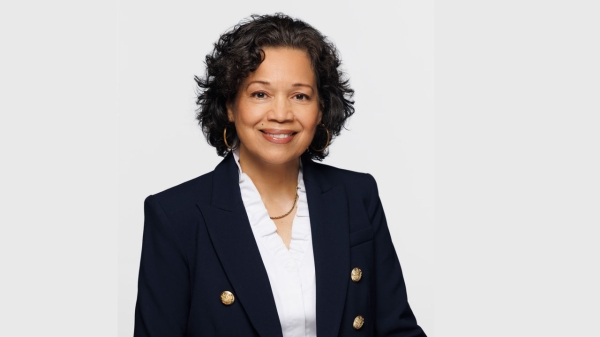
CBS News president to give keynote address at Cronkite School’s spring convocation
Ingrid Ciprián-Matthews, president of CBS News, will serve as the keynote speaker at Arizona State University’s Walter Cronkite School of Journalism and Mass Communication spring 2024 convocation. …

School of Politics and Global Studies director's new book explores mass violence
Why do people commit atrocities and why are certain groups, including religious and ethnic, more vulnerable to large-scale violence? These questions are explored in a new book by Güneş Murat Tezcür…
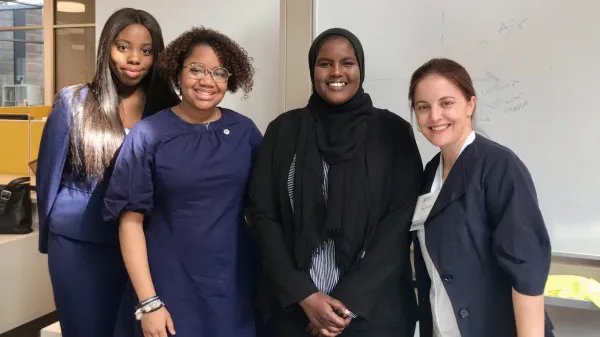
ASU faculty contributing to improvement of Wikipedia
Many academics have a love-hate relationship with Wikipedia. While the website has information about almost anything you can imagine, the credibility of that information is sometimes suspect. Tracy…
